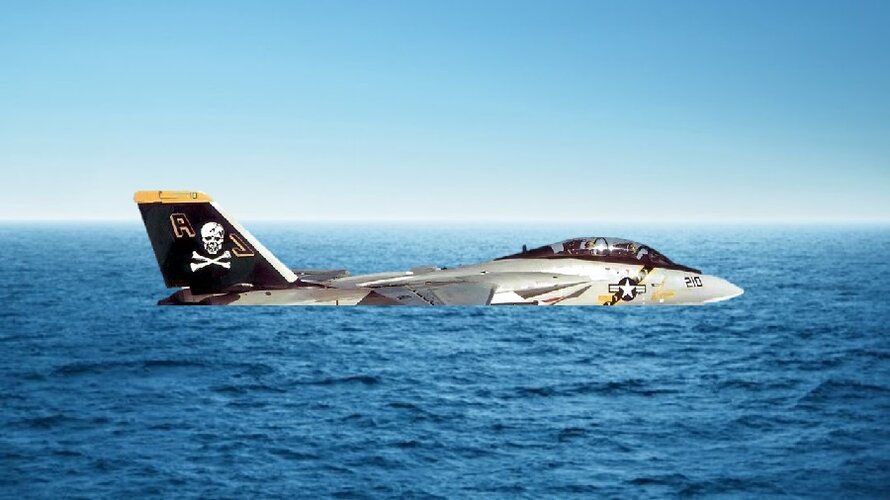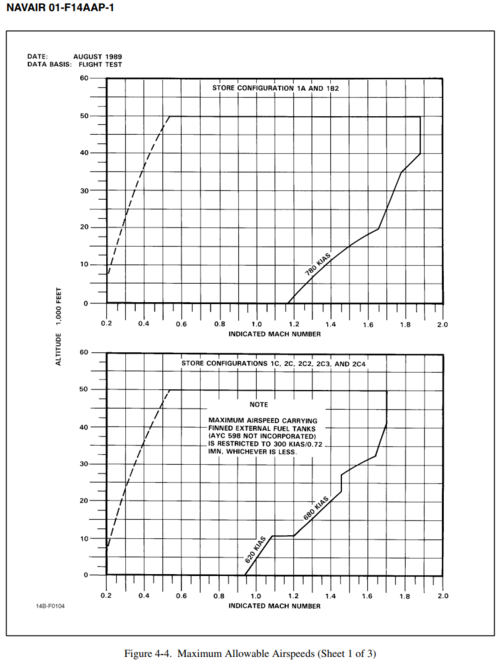You are using an out of date browser. It may not display this or other websites correctly.
You should upgrade or use an alternative browser.
You should upgrade or use an alternative browser.
- Joined
- 25 July 2007
- Messages
- 4,152
- Reaction score
- 3,795
I've only ever seen Mach 1.07 at S/L but not sure if that was when carrying ordnance.
Anyway, you'll probably get more responses if your re-post your question in the Aviation & Space section of The Bar.
Anyway, you'll probably get more responses if your re-post your question in the Aviation & Space section of The Bar.
- Joined
- 24 November 2008
- Messages
- 1,401
- Reaction score
- 1,949
- Joined
- 27 December 2005
- Messages
- 16,888
- Reaction score
- 21,589
Moved!
isn't maximum allowable airspeed the plane's VNE?
Most piston engined aircraft operate on VNE, which is a percentage set by the FAR’s of VD (maximum dive) when structure failure or flutter would occur. Most turbines operate on some form of maximum operating (VMO) which can be knots and/or Mach.isn't maximum allowable airspeed the plane's VNE?
Now supersonic military jets have two speed limitations, one set by max q (typically below 19-21,000 ft) and other set by maximum Mach (above the 19-21,000 ft cross over). Since the speed of sound decreases with altitude up into the 30’s kft when the altitude is in the 19-21,000 ft range the max Mach and max q intersect, below that max q limits and above max Mach limits.
Fun fact, with most test programs you fly out past the max speed to verify the required safety margin set by an FAR or mil std. I have flown test aircraft past VNE to verify the margin.
- Joined
- 3 June 2011
- Messages
- 17,871
- Reaction score
- 10,918
Please tell us you've had a B-52 past Mach 1.Most piston engined aircraft operate on VNE, which is a percentage set by the FAR’s of VD (maximum dive) when structure failure or flutter would occur. Most turbines operate on some form of maximum operating (VMO) which can be knots and/or Mach.isn't maximum allowable airspeed the plane's VNE?
Now supersonic military jets have two speed limitations, one set by max q (typically below 19-21,000 ft) and other set by maximum Mach (above the 19-21,000 ft cross over). Since the speed of sound decreases with altitude up into the 30’s kft when the altitude is in the 19-21,000 ft range the max Mach and max q intersect, below that max q limits and above max Mach limits.
Fun fact, with most test programs you fly out past the max speed to verify the required safety margin set by an FAR or mil std. I have flown test aircraft past VNE to verify the margin.
_Del_
I really should change my personal text... Or not.
- Joined
- 4 January 2012
- Messages
- 1,019
- Reaction score
- 1,223
That's why they test them out at Death ValleyHi,
At sea level I doubt that you go too fast for too long. You probably should climb up a few feet at least so that you belly isn't dragging along the ground.
Shhh, you weren’t supposed to say anything about thatPlease tell us you've had a B-52 past Mach 1.
The reason I remember the max q/max Mach intersection is because I did drop a MALD at .92 M and 390 KCAS, that was kind of fun as the -1 limit is .88 M. Basically we had to have a pacer, then set up 2,000 ft above the predicted intersection that day at .92 M and then descend until the Viper tells you he’s at 390 KCAS, jettison the store, hope the photog got the slow motion video.
That’s actually not too far from the truth. Panamint Valley is the next one over from Death Valley and there is a low level route there. In special circumstance where the data requires you can get authorization to fly below sea level in Death Valley.That's why they test them out at Death ValleyHi,
At sea level I doubt that you go too fast for too long. You probably should climb up a few feet at least so that you belly isn't dragging along the ground.

From what I’m understanding, maximum allowable airspeed isn’t the Vne. Then, does that mean that the plane would be able to reach that speed flying in a straight line? Do you have any documents that explain all these terms?Most piston engined aircraft operate on VNE, which is a percentage set by the FAR’s of VD (maximum dive) when structure failure or flutter would occur. Most turbines operate on some form of maximum operating (VMO) which can be knots and/or Mach.isn't maximum allowable airspeed the plane's VNE?
Now supersonic military jets have two speed limitations, one set by max q (typically below 19-21,000 ft) and other set by maximum Mach (above the 19-21,000 ft cross over). Since the speed of sound decreases with altitude up into the 30’s kft when the altitude is in the 19-21,000 ft range the max Mach and max q intersect, below that max q limits and above max Mach limits.
Fun fact, with most test programs you fly out past the max speed to verify the required safety margin set by an FAR or mil std. I have flown test aircraft past VNE to verify the margin.
It depends is the operative answer. Some aircraft will happily blow right past the limit straight and level, others won’t. The joke with the Cessna 150 was you could point it straight down, full throttle and never exceed the yellow arc. I suspect that the F-14B/D‘s limit has something to do with not rescheduling the variable inlets, but that’s pure speculation not based off of any facts, just my gut after a few years of flight test.From what I’m understanding, maximum allowable airspeed isn’t the Vne. Then, does that mean that the plane would be able to reach that speed flying in a straight line? Do you have any documents that explain all these terms?
The best place to go and find the definitions are the Federal Aviation Regulations (FAR’s) or the mil standards. Both are online and searchable.
Similar threads
-
"Improved F-5" and STOL F-5, from 1964
- Started by blaze016
- Replies: 3
-
Supersonic/Hypersonic Kinetic-Heating / Blunt and Sharp Noses
- Started by KJ_Lesnick
- Replies: 17
-
-
-



